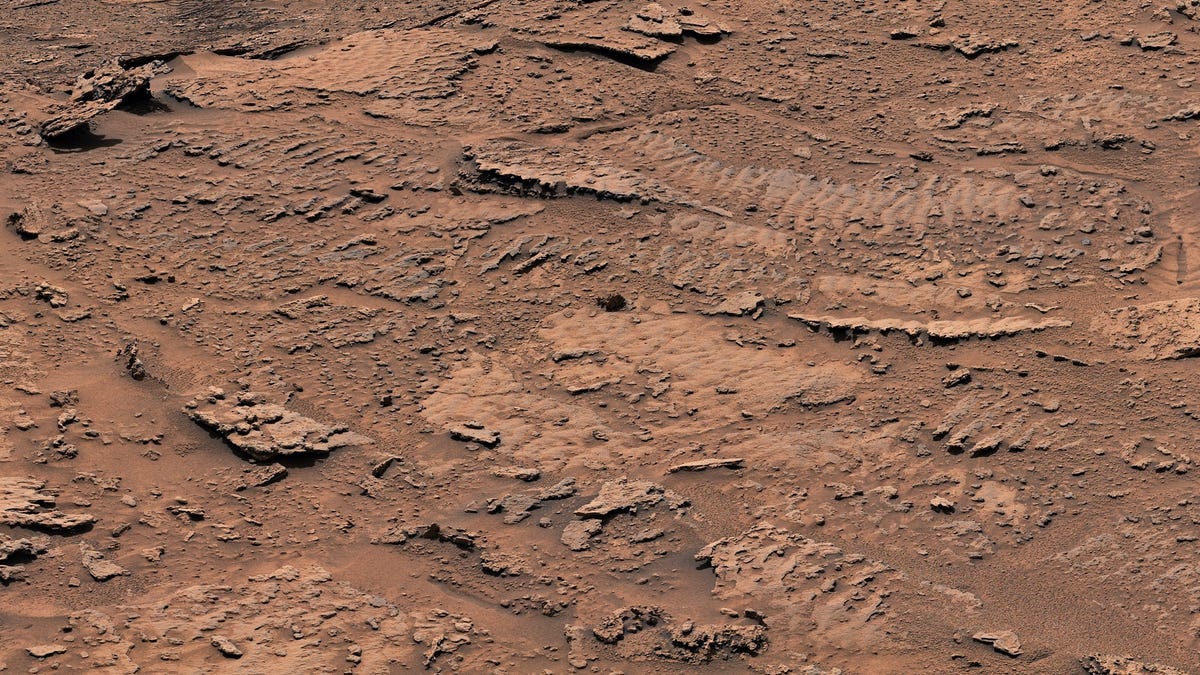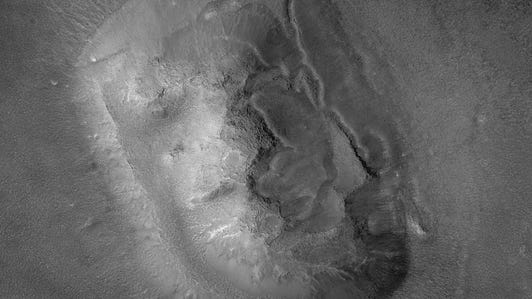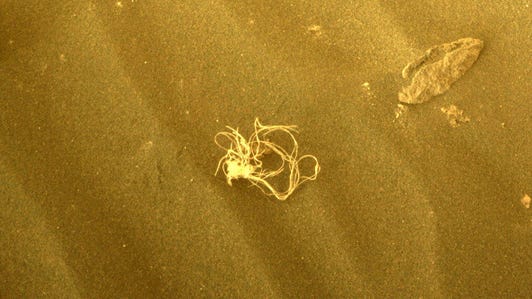
According to NASA, waves on the surface of a shallow lake stirred up sediment billions of years ago. That sediment eventually formed into rock with rippled textures.
NASA/JPL-Caltech/MSSS
This story is part of Welcome to Mars, our series exploring the red planet.
NASA’s Curiosity rover has logged over a decade in the Gale Crater on Mars. It’s a veteran of the red planet, but Mars still has some surprises in store, like an ancient lake bed in an unexpected place.
The rover documented a landscape of stunning rocks that show distinctive signs of water from Mars’ deep past. “Billions of years ago, waves on the surface of a shallow lake stirred up sediment at the lake bottom, over time creating rippled textures left in rock,” NASA said in a statement on Wednesday.
Curiosity is working its way up the lower levels of the crater’s massive central mountain, Mount Sharp. One of the rover’s main goals is to find out if this area might have once been habitable for microbial life. Understanding the crater’s history of water is an important component of the mission.
“This is the best evidence of water and waves that we’ve seen in the entire mission,” said Curiosity project scientist Ashwin Vasavada. “We climbed through thousands of feet of lake deposits and never saw evidence like this — and now we found it in a place we expected to be dry.”

 Enlarge Image
Enlarge Image
This 360-degree panorama shows Curiosity’s view of the Marker Band valley in late 2022.
NASA/JPL-Caltech/MSSS
NASA says the mountain acts like a timeline, with older layers at the bottom and younger layers at the the top. The rippling rocks are in an area described as the Marker Band where there’s a distinctive layer of dark rock. Curiosity has attempted to drill into the fascinating rocks in this area to study them more closely, but the rocks are incredibly hard and have so far foiled the rover’s attempts. The team still hopes to find a softer rock to drill into.
The rippling lake rocks aren’t the only ones that caught scientists’ eyes. Curiosity also spotted some rocks with regular layers on them. The formation of those rock layers is still under investigation, but might be connected to ancient dust storms. “The wave ripples, debris flows, and rhythmic layers all tell us that the story of wet-to-dry on Mars wasn’t simple,” Vasavada said. “Mars’ ancient climate had a wonderful complexity to it, much like Earth’s.”
59 Weird Objects Seen on Mars, Explained




+59 more
See all photos
Curiosity’s sibling Perseverance rover is also studying the remains of an ancient lake over in the Jezero Crater. NASA hopes Percy will build on Curiosity’s work and advance it even further with the planned Mars Sample Return mission. If all goes well, we could have actual rock samples from Jezero to study on Earth in the 2030s. We might finally get some clearer answers about potential life on Mars long ago.
Curiosity is working its way toward a scenic set of hills and cliffs. Up ahead in the distance is evidence of what may have been a wet landslide. The landscape is stunning. Said Vasavada in a NASA video on the rippling rocks, “If this was on Earth, we’d probably make it a national park.”
